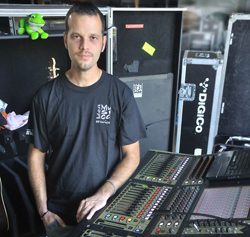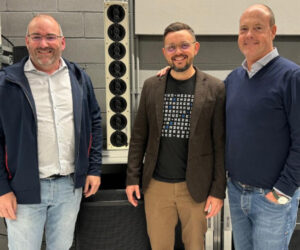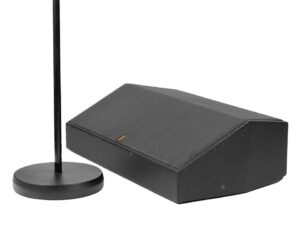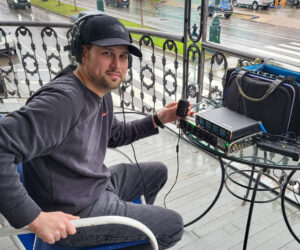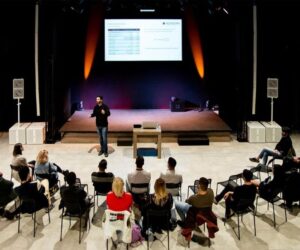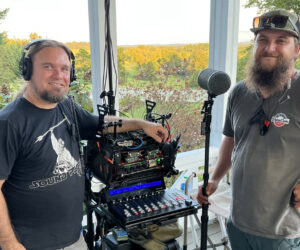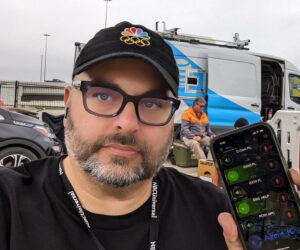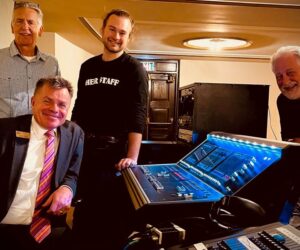Rental firm Idea Musica Service of Latina in central Italy recently provided a DiGiCo SD8 digital console and DiGiRack to meet the criteria of a sound design conceived by AudioProgetti of Cavenago Brianza (Milan) for the latest concert tour by Italian singer/songwriter Gianluca Grignani.
AudioProgetti Technical Manager Gabel Guagliumi explains the design: “Idea Musica’s brief was to put together a complete touring control system with 56 input channels and 24 outputs, a single core for audio inputconversion (avoiding the additional cost and space required for splitters) and digital signal transport.
“We opted for a DiGiCo SD8 and DiGiRack because it enables us to have control of 60 input channels in the three sections of the console work surface, the same excellent preamps as the DiGiCo SD7 and D5, a modular stage rack that can be customized in groups of eight channels – in this specific case there are seven groups – and signal transport via MADI.
“Since monitor consoles normally have more gain-related problems, such as feedback, it was decided that it should be the set-up’s ‘master’ desk and the FOH console the ‘slave’.”
Monitor Engineer Paolo Zanier was on his first outing with a DiGiCo console. “I must say they’ve designed a top quality system,” he notes. “The preamplifiers and A/D and D/A converters in the DiGiRack at the heart of the system do their job excellently, enabling engineers to obtain a great sound timbre and body without having to resort to excessive EQ.”
Zanier and FOH engineer Alessandro Catrucci use the system’s Gain Tracking feature, so that when the former changes an analogue gain control on the his desk, the FOH console reflects the changes and the digital trim control compensates for them by moving by the same amount in the opposite direction.
Among the other features Zanier found extremely useful was the possibility of working on the monitor signals of the artist and his band (with the send levels assigned to the channel faders in the console’s Solo functions) and being able to call up the function extremely rapidly.
He was also pleased with the layout and features of the work surface, which enabled him to work on any channel of any bank while keeping a specific, important channel in one of the other sections constantly under control – such as the artist’s main vocal channel. He also found the system’s software rapid and intuitive. “It’s as if it had been conceived precisely for my customary modus operandi,” he adds.
As well as feedback related issues, Zanier cited two more reasons for having decided to use the monitor desk as the master console.
“All the Line outs are used for the monitors and, since the distribution of the in and out signals is via MADI, a coax cable is necessary to send the signals to the FOH desk and the other kept as a spare,” he explains. “We use 18 of the 24 Line Outs for the actual monitor system, which features a combination of loudspeakers and IEM, plus a premix of the two click tracks fed to the drummer.”
Although the band has a reasonably standard line-up, with drums, bass, two sets of keyboards and lead guitar, the artist also plays guitar, which is fed into two amps, each with its own cabinet, thus using either of the sounds or a combination of both. There are also 14 sequence channels (percussion, pad and other material). So there are 52 input channels, plus six more used only on stage, including two click tracks and other split channels.
Zanier concludes: “We’re pushing the desk hard and it hasn’t given the slightest problem, so I’d like to be able to use it again in the future, as it has allowed us to carry out our work with excellent results and great interaction.”


